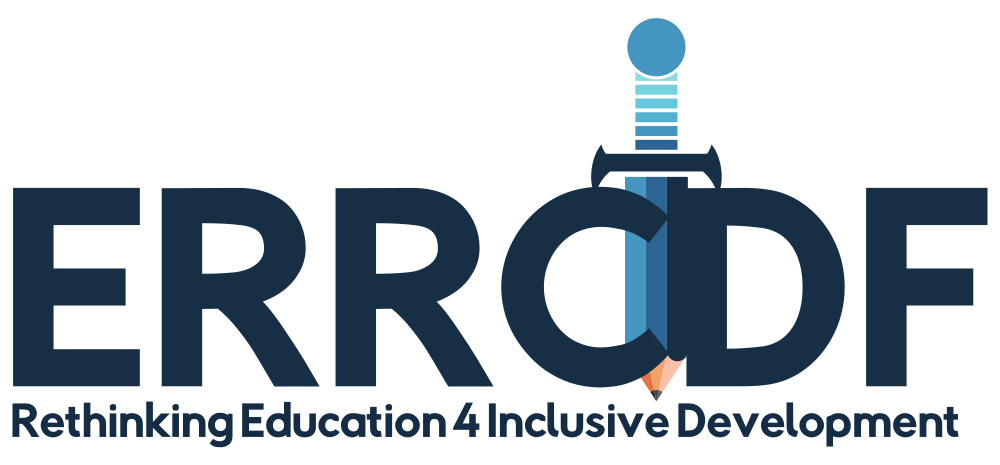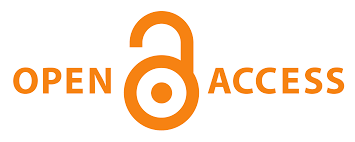Form and Function of Teacher’s Questioning Technique in English Foreign Language Classroom Interactions
DOI:
https://doi.org/10.38140/ijer-2022.vol4.07Keywords:
Form and function, Teachers’ questioning technique, English foreign language, Classroom interactionsAbstract
English Foreign Language (EFL) teachers most frequently deal with question types in their interactions with students. However, questioning is not only concerned with type but also with form and function. Therefore, this qualitative study aimed to examine the types, forms, and functions of the questions altogether raised by EFL teachers as they interacted with students. The researcher observed and recorded two college-level EFL teachers. Using the conversation analysis tenets, the data were transcribed and examined. The results have demonstrated that the teacher questions used were insufficient for the questioning activity. The form is related to the question type. Additionally, the teachers’ questions had diagnostic, educational, and motivating purposes. Therefore, it is advantageous for teachers to ask questions during class discussions if they have a comprehensive understanding of type, shape, and function.
References
Atwood, S., Turnbull, W., & Jeremy, I. M. (2010). Construction of knowledge in classroom talk. Journal of the Learning Sciences, 19(3), 358–402. https://doi.org/10.1080/10508406.2010.481013
Babaii, E., Parsazadeh, A., & Moradi, H. (2018). The question of power in language classes from a critical discourse analysis perspective: Once a student, always a student. Pragmatics and Society, 8(4), 542–570. https://doi.org/10.1075/ps.8.4.04bab
Barnett, J. E., & Francis, A. L. (2012). Using higher order thinking questions to foster critical thinking?: A classroom study. An International Journal of Experimental Educational Psychology, 32(2), 201–211.
Boyd, M. P. (2015). Relations between teacher questioning and student talk in one elementary ELL classroom. Journal of Literacy Research, 47(3), 370–404. https://doi.org/10.1177/1086296X16632451
Chappell, P. (2014). Engaging learners: Conversation-or dialogic-driven pedagogy? ELT Journal, 68(January), 1–11. https://doi.org/10.1093/elt/cct040
Darong, H. C. (2020). Pragmatic strategy of Indonesian English teachers in questioning. JELTL (Journal of English Language Teaching and Linguistics), 5(2), 145–162. https://doi.org/(doi: 10.21462/jeltl.v5i2.398)
Darong, H. C., Kadarisman, A. E., Basthomi, Y., Suryati, N., Hidayati, M., & Niman, E. (2020). What aspects of questions do teachers give attention to? International Journal of Innovation, Creativity and Change, 10(11), 191–208.
Darong, H. C., & Niman, E. M. (2021). Do teacher questions function as assessment for learning? Randwick International of Education and Linguistics Science (RIELS) Journal, 2(3), 437–454.
Darong, H. C., Niman, E. M., Menggo, S., & Beda, R. (2021). Darong, Niman, Menggo, and Beda,. Tell: Teaching of English language and literature, 9(1), 11–24. https://doi.org/Doi: http://dx.doi.org/10.30651/tell.v9i1.5905 Questioning
Darong, H. C., Niman, E. M., Su, Y. R., & Fatmawati. (2021). Pragmatic function of questioning act in EFL classroom interaction. In : 1st ICEHHA (pp. 1–16). Ruteng: EUDL (European Digital Library). https://doi.org/10.4108/eai.3-6-2021.2310650
Diem, T., Khong, H., Saito, E., & Gillies, R. M. (2018). Key issues in productive classroom talk and interventions. Educational Review, 1–17. https://doi.org/10.1080/00131911.2017.1410105
Durrleman, S., & Franck, J. (2016). Syntactic complexity in the comprehension of wh- questions and relative clauses in typical language development and autism. Applied Psycholinguistics, 37(6), 1501–1527. https://doi.org/10.1017/S0142716416000059
Eckerth, J. (2009). Negotiated interaction in the L2 classroom. Language Teaching, 42(1), 109–130. https://doi.org/10.1017/S0261444808005442
Engin, M. (2013). Questioning to scaffold?: An exploration of questions in pre-service teacher training feedback sessions. European Journal of Teacher Education, 36(1), 39–54. https://doi.org/10.1080/02619768.2012.678485
Gallagher, S. A., Courtright, R. D., & Robinson, L. P. (2015). What were Willie and Xavier thinking?? A reflection on James Gallagher’s research on student-teacher interaction. Journal for the Education of the Gifted, 38(1), 44–50. https://doi.org/10.1177/0162353214565553
Ghafarpour, H. (2016). Classroom conversation analysis and critical reflective practice: Self-evaluation of teacher talk framework in focus. RELC Journal, 48(2), 210–225. https://doi.org/10.1177/0033688216631173
Gilson, C. M., Little, C. A., Ruegg, A. N., & Bruce-davis, M. (2014a). An investigation of elementary teachers ’ use of follow-up questions for students at different reading levels. Journal of Advanced Academics, 25(2), 101–128. https://doi.org/10.1177/1932202X14532257
Gilson, C. M., Little, C. A., Ruegg, A. N., & Bruce-davis, M. (2014b). An investigation of elementary teachers’ use of follow-up questions for students at different reading levels. https://doi.org/10.1177/1932202X14532257
Harvey, S., & Light, R. L. (2015). Questioning for learning in game-based approaches to teaching and coaching. Asia-Pacific Journal of Health, Sport and Physical Education, 6(2), 175–190. https://doi.org/10.1080/18377122.2015.1051268
Hepple, E. (2012). Questioning pedagogies?: Hong Kong pre-service teachers ’ dialogic reflections on a transnational school experience. Journal of Early Adolescence of Education for Teaching, 38(3), 309–322. https://doi.org/10.1080/02607476.2012.668778
Hill, J. B. (2016). Questioning techniques?: A study of instructional practice questioning techniques. A study of instructional practice. Peabody Journal of Education, 91(5), 660–671. https://doi.org/10.1080/0161956X.2016.1227190
Hosoda, Y. (2015). Teacher deployment of ‘oh’ in known-answer question sequences. Classroom Discourse, 7(1), 58–84. https://doi.org/10.1080/19463014.2015.1099111
Hu, G., & Duan, Y. (2018). Questioning and responding in the classroom: A cross-disciplinary study of the effects of instructional mediums in academic subjects at a Chinese university. International Journal of Bilingual Education and Bilingualism, 22(1), 1–20. https://doi.org/10.1080/13670050.2018.1493084
Kao, S., Carkin, G., & Hsu, L. (2011). Questioning techniques for promoting language learning with students of limited L2 oral proficiency in a drama-oriented language classroom. Research in Drama Education: The Journal of Applied Theatre and Performance, 16(4), 489–515. https://doi.org/10.1080/13569783.2011.616399
Lee, R. (2016). Implementing dialogic teaching in a Singapore English language classroom, 500. https://doi.org/10.1177/0033688216631171
Maphosa, C., & Wadesango, N. (2017). Questioning ‘Questioning’: Examining the use of questioning as an interactive teaching tool in higher education. Journal of Communication, 7(1), 111–117. https://doi.org/10.1080/0976691X.2016.11884889
Palma, G. (2014). A classroom view of negotiation of meaning with EFL adult Mexican pupils. https://doi.org/10.1177/2158244014535941
Phillips, E. (2013). A Case Study of Questioning for Reading Comprehension during Guided Reading. Education 3-13: International Journal of Primary, Elementary and Early Years Education, 41(1), 110–120. https://doi.org/10.1080/03004279.2012.710106
Qashoa, S. H. (2013). Effects of teacher question types and syntactic structures on EFL classroom interaction. The International Journal of Social Sciences, 7(1), 52–62.
Reinke, W. M., Herman, K. C., & Newcomer, L. (2016). The brief student-teacher classroom interaction observation: Using Dynamic indicators of behaviors in the classroom to predict outcomes and inform practice. https://doi.org/10.1177/1534508416641605
Robitaille, Y. P., & Lauderdale, F. (2015). Teachers’ experiences relative to successful questioning and discussion techniques. American International Journal of Contemporary Research, 5(1), 7–16.
Roever, C., & Al-gahtani, S. (2015). The development of ESL proficiency and pragmatic performance. ELT Journal, 69(4), 395–404. https://doi.org/10.1093/elt/ccv032
Rolin-ianziti, J. C., & Ord, C. (2016). Variations on the IRE pattern in a French beginner task-based classroom. The Language Learning Journal ISSN, 46(4), 343–356. https://doi.org/10.1080/09571736.2015.1124445
Saito, K., & Hanzawa, K. (2016). The role of input in second language oral ability development in foreign language classrooms: A longitudinal study. Language Teaching Research, 22(4), 398–417. https://doi.org/10.1177/1362168816679030
Sarandi, H. (2016). Oral corrective feedback: A question of classification and application. Tesol Quarterly, 50(1), 235–246. https://doi.org/10.1002/tesq.285
Solem, M. S., & Skovholt, K. (2017). Teacher formulations in classroom interactions. Scandinavian Journal of Educational Research ISSN (August). https://doi.org/10.1080/00313831.2017.1324904
Stivers, T. (2018). How we manage social relationships through answers to questions: The case of interjections. Discourse Processes. https://doi.org/10.1080/0163853X.2018.1441214
Taboada, A., Bianco, S., & Bowerman, V. (2012). Text-based questioning: A comprehension strategy to build English language learners’ content knowledge. Literacy Research and Instruction ISSN, 51(2), 87–109. https://doi.org/10.1080/19388071.2010.522884
Tavakoli, E., & Davoudi, M. (2016). Question generation behavior of reflective teachers. Reflective Practice International and Multidisciplinary Perspectives, 17(4), 415–429. https://doi.org/10.1080/14623943.2016.1169167
Tofade, T., Elsner, J., & Haines, S. T. (2013). Best practice strategies for effective use of questions as a teaching tool. American Journal of Pharmaceutical Education, 77(7), 1–9.
Vaish, V. (2013). Questioning and oracy in a reading program. Language and Education, 27(6), 526–541. https://doi.org/10.1080/09500782.2012.737334
Walsh, R. L., & Hodge, K. A. (2018). Are we asking the right questions? An analysis of research on the effect of teachers ’ questioning on children’s language during shared book reading with young children. Journal of Early Childhood Literacy, 18(2), 264–294. https://doi.org/10.1177/1468798416659124
Waring, H. Z., Reddington, E., Yu, D., & Clemente, I. (2018). Going general: Responding to yes– no questions in informational webinars for prospective grant applicants. Discourse & Communication, 12(3), 307–327. https://doi.org/10.1177/1750481318757762
White, K. (2010). Asking sacred questions: Understanding religion’s impact on teacher belief and action. Religion & Education, 37(1), 40–59. https://doi.org/10.1080/15507390903559103
Wright, B. M. (2016). Display and referential questions: Effects on student responses. Nordic Journal of English Studies, 15(4):160-189, 15(4), 160–189.
Downloads
Published
How to Cite
Issue
Section
License
Copyright (c) 2022 Hieronimus Canggung Darong

This work is licensed under a Creative Commons Attribution-NonCommercial-NoDerivatives 4.0 International License.










